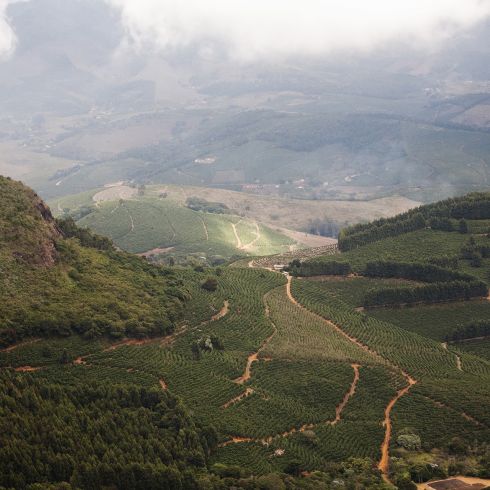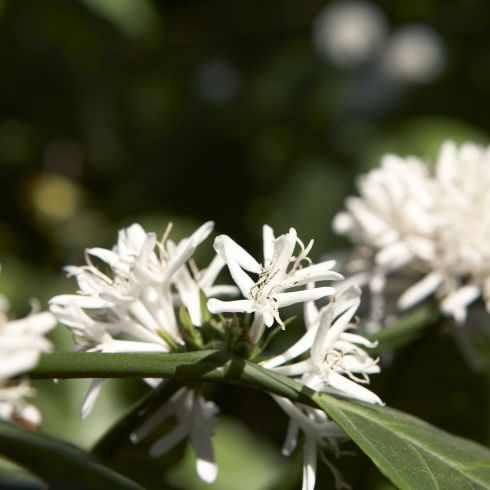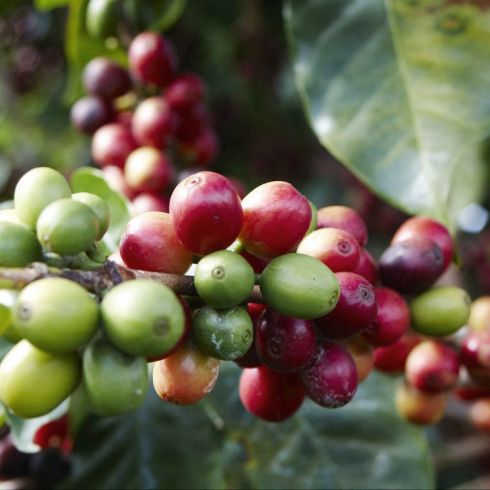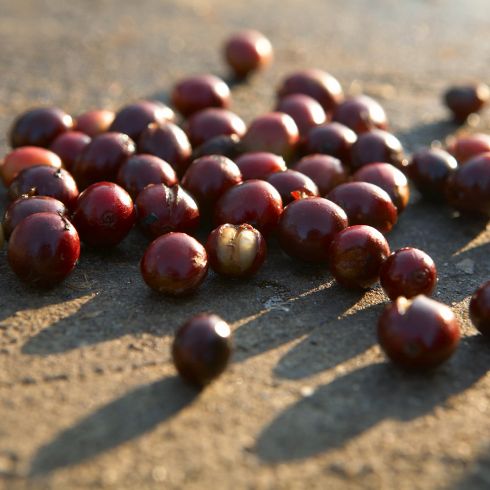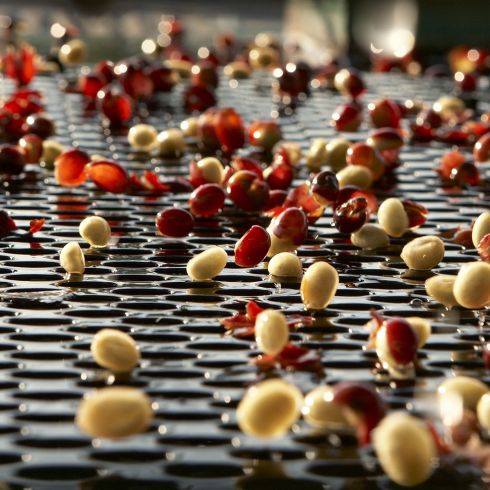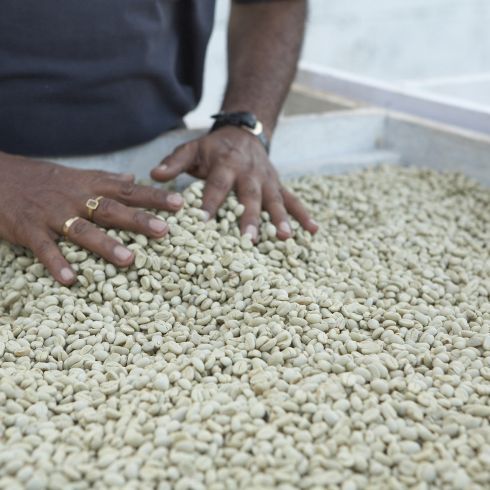The coffee plant grows in the tropical and subtropical zones, between the 25° northern and southern latitudes. The soil and the climatic conditions characterize its aroma, its acids and consequently its entire profile. It is the terroir that gives coffee its complexity.

The way of coffee
From the plantation to the cup


Two varieties of the coffee plants are consumed: Coffea Arabica and Coffea Canephora, the latter is better known as Robusta. Arabica is generally a bit more sweet, fruity and contains more acids, while Robusta is a bit spicier, tangier and a bit more bitter.

The coffee plant develop flowers for the first time at the age of three. The green-white blossom of a coffee plant lasts two days and is triggered by rain showers. The hermaphroditic flowers fertilise themselves and are therefore not dependent on outside help.

Each coffee cherry contains two seeds. These seeds are the green coffee beans that are later roasted. The ripe coffee cherries are usually harvested by hand. Machines are only used in a few countries. Careful picking leads to better quality and more aroma in the cup.

After harvesting, the seed kernel is separated from the flesh by various methods. The kernel is either washed or crushed to remove it from the flesh or the whole cherry is dried. The coffee kernel is then peeled from its parchment skin, sorted by size and checked for damage.

For transport, the green coffee is packed in 60 to 70 kg bags and prepared for export. This is usually done in containers via ships and takes 6 to 8 weeks. In the last stage, the container is transported from the port to the roasting plant by lorry.

For a balanced blend, coffee is mixed from different cultivating countries, Arabicas and Robustas as well as different processing methods. The preparation of the blend recipe shows the personal signature of each roaster. Some particularly exclusive coffees are not mixed, but roasted as so-called Single-Origins or Terroir coffee.

The choice of the roasting profile, that is the course of temperature and roasting time, influence the later taste, aromas and balance of coffee drinks. Many chemical and physical processes take place during roasting. For example, carbohydrates caramelise and the colour changes from greenish green coffee to brown roasted coffee. The bean becomes visibly larger and up to 20% lighter due to the loss of water.

The choice of the degree of roasting depends not only on the green coffee blend, but also on the future preparation method or the coffee drink. Light roasts usually have a little more acidity and are more fruity (ideal for brewed coffee or coffee with cream). Dark roasts are more suitable for espresso and mixed milk drinks.

Due to the open cell structure, the roasted coffee becomes a fresh product, which makes air- and light-tight packaging indispensable. The storage bin is ideally dry and with constant temperature between 14 to 22 degrees. Opened or stored in the bean container coffee beans lose their aroma already after two days.

The degree of grinding depends on the preparation method. Basically, the following applies: The choice of the grinding degree influences the brewing time with the dosage and the temperature. The finer, the more resistance there is to the water and the longer the cycle time.


Zubereitungsmethoden und Kaffeegetränke gibt es in unzähligen Varianten. Wichtig ist, dass der Barista oder die Servicefachperson seine Kaffeegetränke kennt und ihre Qualität täglich prüft.


